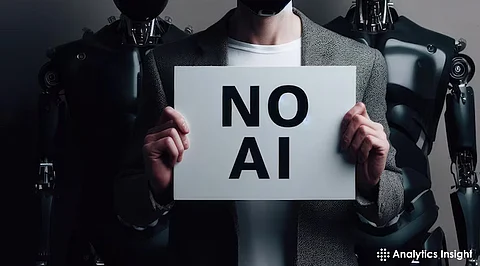

The Take It Down Act is a U.S. law targeting non-consensual intimate imagery, including AI-generated deepfakes. It requires platforms to remove such content within 48 hours of a report. The law holds tech firms accountable while raising concerns about free speech, content misuse, and enforcement challenges for smaller platforms
The Take It Down Act is a new law passed in the United States that aims to stop and criminalize the publication of non-consensual intimate imagery (NCII), including AI-generated NCII or deepfake revenge pornography.
These are often deepfakes that show people in private situations they were never actually in. Even though the images are fake, they can feel just as damaging as real ones. Once shared online, they can spread quickly and be hard to remove.
The legislation provides individuals with the right to report such content. After a report, websites and applications have to remove the images within 48 hours. This applies not only to the initial post but also to reposts and copies.
The legislation aims at content that depicts a person in an intimate or sexual setting without their consent. This encompasses genuine images as well as deepfakes made by AI. If a deceitful image or video resembles a person and was created to embarrass or exploit them, it comes within the ambit of the law. The legislation aims at preventing that type of content from going viral and inflicting perpetual harm.
The Federal Trade Commission or FTC is the body in charge of ensuring that companies comply with the law. If a platform disregards a legitimate takedown request, the FTC can sanction them. It makes the law effective and compels tech companies to act fast and take reports seriously.
The bill was backed by both parties in the US House of Representatives. It was only opposed by two members. Even former First Lady Melania Trump endorsed the law and tied it in with her previous campaign aimed at protecting children online. Her support served to increase awareness about the subject.
There are some concerns by some civil rights organizations. They are afraid the law will be used to remove content unjustly. For instance, one can falsely accuse a picture of being a deepfake simply so it can be deleted. Others are afraid the definition of harmful content is too wide and may influence free speech.
There is also the fear of affecting smaller sites which will not possess staff or infrastructure to handle all the complaints under 48 hours. These platforms will have no option but to censor too much material to ensure that they steer clear of litigation.
The Take It Down Act is a signal that legislators are taking notice of the uses of AI. For technology firms, particularly image and video technology firms, this bill is added responsibility. They will have to create systems capable of avoiding misuse of their product. That might involve watermarking content made with AI, restricting what their technology is able to produce, or creating more effective content filters.
This law shows that AI content is no longer something that slips through the cracks. Whether real or fake, private images shared without consent now have serious legal consequences. The Take It Down Act pushes the tech industry to think about how its tools can be misused—and to take steps to stop that from happening.
As AI becomes a part of everyday life, laws like this will continue to shape how it’s used. The focus now is on making sure people are protected, even in a world where anyone’s face can be copied and faked with just a few clicks.
